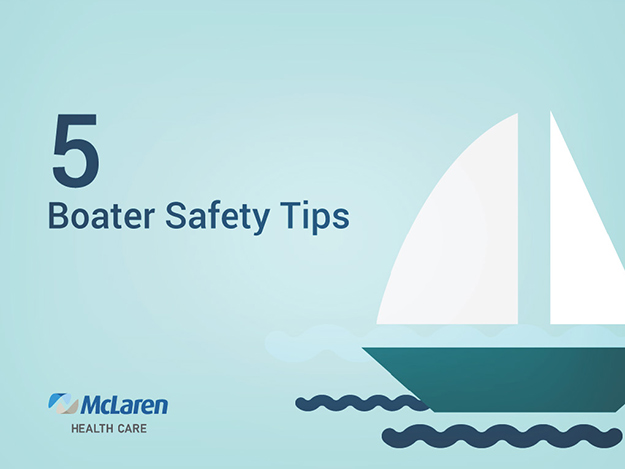Summer is the perfect time to get together with family and friends. One of the most popular activities for these fun gatherings is boating. While boating can be fun, a lot of accidents occur during boating outings from improper safety measures.
In 2014, the most accidents occurred in the following categories, according to the US Coast Guard:
- Recreational boat collisions: 937
- Flooding of boat/swamp: 463
- Hitting a non-moving obstacle: 452
- Running the boat aground: 359
- Water skiing mishaps: 292
Whether you're kayaking, water skiing, or taking a boat tour, it's important to know how to stay safe on the water and minimize your risk of a boating accident.
Here are 5 boater safety tips that will keep you out of harm's way in open water.

1. Perform A Boat Safety Check
The US Coast Guard Auxiliary and the US Power Squadrons provide free safety checks at your boat with certified personnel.
If your boat fails the inspection, you will not be penalized. Proof that the boat has had a safety check is usually located somewhere on the boat.
For a boat to meet US Coast Guard requirements, there must be an approved life jacket for each person onboard.
If the boat is over 16 feet, it must also have-at minimum-one throwable Type IV device, such as a life preserver or boat cushion.
Sources: US Coast Guard, US Department of Homeland Security
2. Always Wear A Life Jacket
Although it seems like common knowledge, many people forget that they should always wear a life jacket while boating. If you don't wear one and your boat flips, you could potentially be trapped under water.
In fact, certain types of life jackets not only help keep your head above water, but they also keep you in a position where you can breathe properly.
Life jackets must be:
- Approved by the US Coast Guard
- In good, usable condition
- Properly sized for the user
Source: US Coast Guard
3. Take A Cold Water Survival Course
Cold water is dangerous, which people tend to forget when they go boating. In fact, being submersed in 50° to 60°F water can cause cold water shock.
If the water is 60°F or below, a wetsuit is required. A drysuit is recommended when paddling in a canoe or kayak.
When your boat capsizes and you are thrown into the water, your body's first reflexive reaction is to gasp for air, followed by:
- Increased heart rate
- Blood pressure
- Disorientation
- Possible cardiac arrest
Source: American Canoe Association
4. Don't Drink and Sail
Just like drinking and driving, you could get a BUI (boating under the influence) charge if you are intoxicated while driving the boat. In fact, a boat operator can become impaired more quickly than a driver-even if they've had the same number of drinks.
Penalties for being charged with a BUI can include:
- Large fines
- Boat operator's license revoked
- Arrest
- Jail time
So, if you're the one operating the boat, it's best to be sober.
Source: US Coast Guard
5. Know CPR
Cardio pulmonary resuscitation (CPR) can be lifesaving. CPR is performed when someone's heart or breathing has stopped.
Continue performing CPR until the person's heartbeat and breathing returns or medical help arrives and can take over for you.
CPR is a combination of two things: rescue breathing and chest compressions. Rescue breathing supplies oxygen to the person's lungs. Chest compressions keep the person's blood circulating throughout the body.
If the person in need of CPR appears to be breathing normally, do not begin chest compressions. Also, do not check for a pulse, since healthcare professionals are the only ones properly trained to do so.
Source: National Library of Medicine